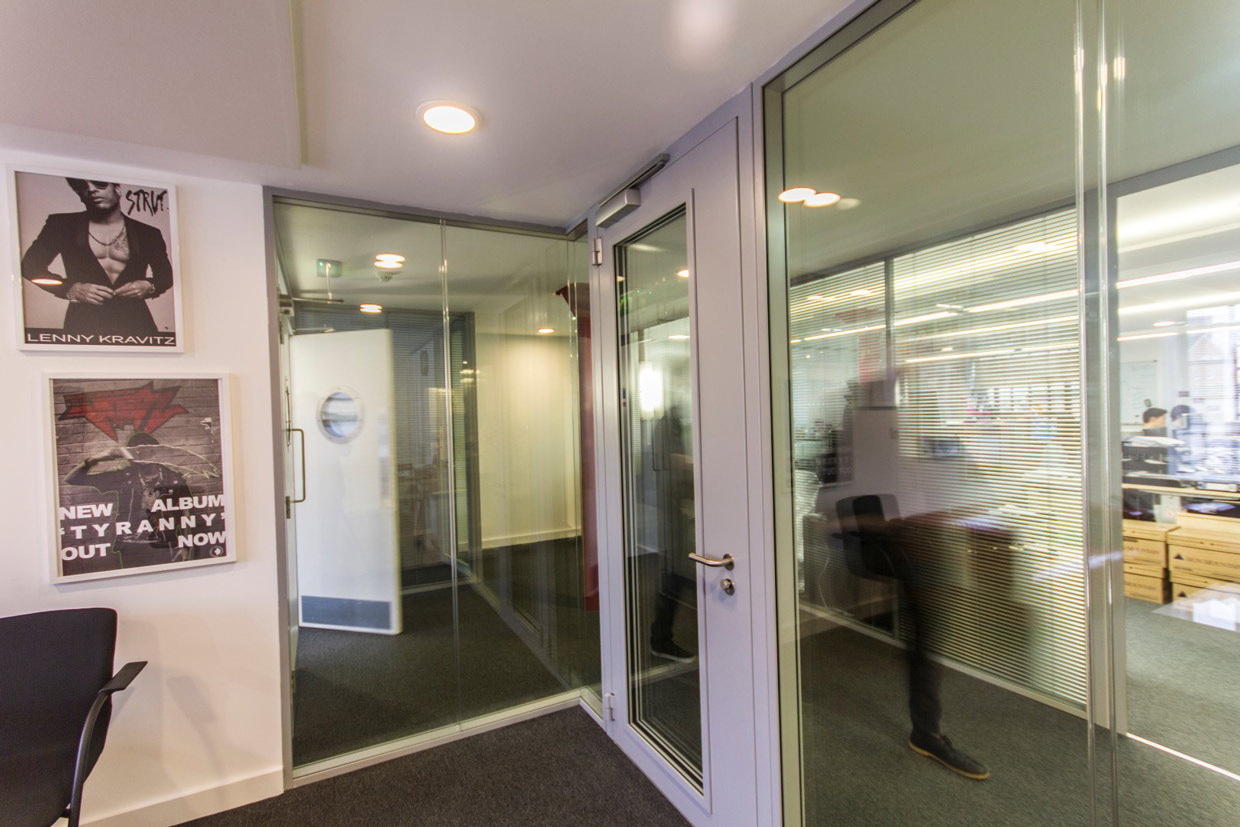BLOG 'A chronology of soundproofing systems London'
Essentially, acoustic doors / acoustical door treatments come in 3 performance / price tiers.
Tier 1 – Upgrading Existing Doors:
Acoustically upgrading existing doors is the most simple and economical approach, typically involving, where practicable, mass-loading and airtightness works.
Such applications, based on a cross-section of field test data, can upgrade the airborne sound insulating performance of existing doors by c. 14 to 18 dB(A).
Standard flush timber doors tend to provide in the order of 15 to 20 dB(A) airborne sound insulation, therefore, post-works, one can expect such doors to provide between 29 and 38 dB(A) airborne sound insulation.
Example 1, below, shows a system, designed and installed by Mute Soundproofing®, for a luxury chalet in the French Alps. The existing internal timber doors were acoustically clad and sealed, to match their rustic (farm style), pre-works, appearance.
Having been tested, pre-works, to provide 15 dB(A) airborne sound insulation, the doors now provide 32 dB(A) airborne sound insulation; a 17 dB(A) uplift in acoustical performance.
Example 2, below, shows a system, designed and installed by Mute Soundproofing® (pre-decoration), for a mansion in Belgravia, London. The existing internal timber doors were acoustically clad and sealed, to match their pre-works appearance; in particular, 3-panel (recessed) and 6-panel (raised & fielded) doors.
Having been tested, pre-works to provide 15 dB(A) airborne sound insulation, the doors now provide 33 dB(A) airborne sound insulation; an 18 dB(A) uplift in acoustical performance.
Example 1:
Example 2:
Airtightness works can also be applied to certain styles of glazed doors; typically, those that latch into a frame.
The example below shows a system, designed and installed by Mute Soundproofing®, for an office in Covent Garden, London. The existing internal glazed doors were acoustically sealed, at the perimeter and threshold, whilst maintaining the clean lines of the office design.
Having been tested, pre-works to provide 19 dB(A) airborne sound insulation, the doors now provide 33 dB(A) airborne sound insulation; a 14 dB(A) uplift in acoustical performance.
Tier 2 – Timber Acoustic Doors:
Flush timber acoustic doors (and frames) can be specified up to Rw 48 dB(A) for a single leaf and Rw 46 dB(A) for a double leaf (with meeting stile). Glazed timber acoustic doors (and frames) have the potential to perform up to Rw 43 dB(A), assuming a vision panel of < 0.25 m2.
Timber acoustic doors are available in a wide variety of paint and timber veneer finishes, as such they represent the most aesthetically versatile option.
Image below taken from a Mute Soundproofing® installation for a private company in Mayfair, London.
Tier 3 – Steel Acoustic Doors:
Steel acoustic doors (and frames) can be specified up to Rw 63 dB(A). However, whilst steel acoustic doors clearly acoustically out-perform timber acoustic doors, their significant mass can be prohibitive within certain architectural environments – as such, a structural engineer should be consulted to assess their suitability. Moreover, their industrial appearance can preclude them from certain interior designs.
Image below taken from a Mute Soundproofing® installation for Kobalt Music Group in Southwark, London.

 +44 (0) 20 3858 0833
+44 (0) 20 3858 0833 email
email



























